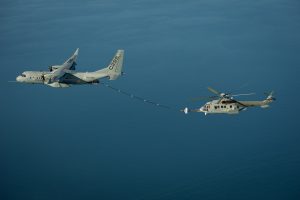This is the second of a three part series by Danny Lam on the way ahead for the “One China Policy.
2017-01-15 By Danny Lam
The Beijing Regime’s strident advocacy of “One China” Policy dates from 1949 when the PRC was proclaimed after the competing Republic of China (ROC) retreated to Taiwan. Between 1949 and 1971, both regimes competed as the internationally recognized legitimate government of “all China”, with the prize of the UN Security Council Permanent Seat for China being held by ROC until October 1971 before the representatives of Chiang Kai-Shek was expelled and the PRC assumed the seat.
Historically, this was no different than when the Republic of China was “founded” in 1911 against the Ching Dynasty after nearly a century of rebellion with many insurgent regimes like the Taiping Heavenly Kingdom, Boxer Rebellion, and the many other local revolts that became competing powers, or states in the western parlance, to the Chings. All of these competitors, particularly the Taiping Heavenly Kingdom, either did or could have become the founder of a new Dynasty.
Indeed, the ROC could just as easily have transformed itself from a Republic to a Dynasty, as General Yuan Shikai, the Second President of ROC did in proclaiming himself Emperor of China in 1915. Any of these competing regimes could have become the successor government to the Ching had they been militarily successful.
This is the context to which Chinese regimes attach great importance to foreigners acknowledging them to be the sole government of “all China.”
Because they know how perilously they cling onto power and how illegitimate they are to the “Chinese” they claim to represent.
Such as it was for the ROC, their authority was uncertain for much of its history, competing with the power of local warlords that had their own military. In this context, the Japanese invasion of Manchuria in 1931 and the subsequent war with ROC in 1937 was a continuation of the competition by the ROC against local authorities.
Japanese was no more an alien order than any other number of ethnic groups that have been lumped together as “Chinese” like the Chings (Manchus are an alliance of northeastern tribes), the Hui (Chinese Muslims), or Mongols (an alliance of nomadic tribes), etc.
Proclamation of the Republic of China in 1911 did not end the competition for power. The abdicated Emperor of the Chings, did not formally collapse for good until Emperor Puyi was expelled from the Forbidden city in 1924, that led to him allying with the Japanese. It only ended when Emperor Puyi of the Kingdom of Manchuko was captured by the Soviets in 1945 and handed over to the Chinese Communist Party after they won against the ROC.
The framing of Japanese vs. Chinese is a fictional construct, at first of ROC propaganda, and then later CCP propaganda that have no basis in fact. It was created to present an illusion of a united “Chinese people” defined by race that in fact, does not exist. The Japanese are just the latest well organized minority group to attempt to conquer China no different from the Chings, or the Mongols, etc. The only difference is the Japanese failed spectacularly when they took on the Western powers before the conquest of China succeeded.
From this historical perspective, it can be seen that the core concern of the PRC with respect to “one China” policy is the regime’s explicit and public acknowledgement of Beijing’s lack of legitimacy in its own territory and its uncertain grip on power within territories they claim for China.
A review of the history of Chinese civilization shows an official record where few Dynasties make it past 300 years, with many Dynasties succumbing sooner, often in as short as 50 years. Sinophiles are fond of bragging that China has a thousand year old civilization yet this is a fictional construct that has awed foreigners who projected Western notions of continuity of governance onto that history.
Reality is quite different.
When Western scholars speak of a government (e.g. Third Republic of France), it is acknowledged and assumed that there is continuity of government between prior and successor regimes. Britain, for example, has been continually ruled by a government traceable to the Norman Conquest with continuity in administration that is recognizable today. Key administrative systems such as systems of property rights, currency, debt, etc. are carried over despite regime change. Thus, a British pound note from 1694 remains legal tender today. To this day, the British Crown honor treaties signed with sovereign native tribes centuries ago in territories still under their jurisdiction.
Chinese regimes, however, do not share these characteristics.

The PRC does not recognize the debts and other obligations incurred by previous regimes like the ROC or the Chings, and to date, despite amassing foreign exchange reserves of $3 trillion dollars, refused to settle past obligations incurred by predecessor regimes like ROC and the Ching.
Likewise, the PRC eliminated / confiscated / altered property rights, refused to acknowledge prior treaty obligations, terming them “unequal treaties”.
A fundamental characteristic of Chinese regimes is their explicit denial of continuity of government and rejection of the idea of treaty or contractual obligations that bind successor, or for that matter, current regimes over time.
Contrast this with other regimes that have collapsed but ultimately, accepted their obligations as a successor regime and settled: Germany, Japan, Russia. West Germany settled their Nazi and prior era debts and expressly acknowledged their obligation as the successor regime despite being divided for much of the cold war era. Japan settled their World War II debts. Russia, post USSR, settled their legal obligations dating from Imperial Russia.
The PRC is the only major regime that has to date, failed to settle their past obligations, putting them in the same category as Argentina. Chinese regimes, cannot be counted on to accept their lawful obligations regardless of their express accession and ratification to the terms of treaties.
However, Chinese regimes can be counted on to demand their treaty or contractual rights from other states irrespective of whether they fulfill their side of the bargain.
When it comes to claiming privileges and rights, however, the PRC (as the ROC) is not hesitant at all to assert claims based on their version of history, for example, asserting that the PRC own much of the South China Sea, despite the PRC signing and ratification of UNCLOS that expressly extinguished those claims. On the bright side, at least the PRC have not termed UNCLOS an “unequal treaty” to date.
This pattern of denying the obligations of a lawful successor regime (e.g. settling outstanding debts incurred by previous regime), while demanding the benefits of a lawful successor regime (i.e. claiming the ROC’s expansive claim to the South China Sea) is a feature of PRC governance that Western scholars have given them a “pass” on.
Generations of Western “China scholars” have glossed over these issues and concealed or downplayed the reality from their understudies.
One wonders what would the world’s reaction be when the PRC argues that territories ceded to Russia in the 19th Century, outer Mongolia, and vast stretches of the former Mongol empire are all “Chinese” territories.
PRC can readily do this by producing “historical records” like they have done to support their claim to the South China Sea.
To this date, the West has not explicitly recognized that they are dealing with a regime that fundamentally rejects core principles behind Western governance: continuity of government and acceptance of both the benefits as well as obligations of prior regimes, and the sanctity of contracts and treaties.
Sometimes, the PRC antics lead to outcomes that are humorous and lead the regime to shortchange themselves. During the negotiations for the PRC to rejoin the international trade community, they asserted that the ROC withdraw from GATT in 1950 was illegal and demanded that they resume membership in the GATT as a founding member.
When this argument was made, the international trade community recognized the implications, and quietly decided to foreclose the opportunity by creating a new organization called the WTO. GATT members who were in good standing had one year to transfer their membership to WTO before the GATT became defunct. Because the PRC failed to follow through their assertion of the illegality of ROC’s withdraw from GATT by paying the back dues owed to GATT, the PRC was not a member in good standing, and thus, could not join WTO without a fresh application. A fresh application meant substantial concessions that would otherwise not have to be made if the ROC withdrawal was illegal.
On the day the one year period for transfer of GATT membership in good standing to WTO ended, the world trading community breathed a sigh of relief. The frightful scenario that the PRC would have presented payment (roughly USD $100m) for back dues to GATT and demanded resumption of membership would have meant the PRC would be a full member with their regime circa 1995 without any concessions being made — a disaster scenario to world trade.
To sum up, “One China” Policy must be a core interest of the PRC because the regime have no illusions on how perilous and weak their grip on power is within China.
For now, there is only one competitor (ROC) that officially competes with Beijing as the government of “all China”.
But there are many others waiting in the wings, awaiting the moment when the Beijing regime’s grip weakens that will emerge.
Editor’s Note: If you wish to comment on this article, you can do so here:






 Vietnam’s President Tran Dai Quang, right, and Japanese Prime Minister Shinzo Abe shake hands at the Presidential Palace in Hanoi, Vietnam, Monday, Jan. 16, 2017. Abe is on a two-day official visit to Vietnam. (Kham/Pool Photo via AP)
Vietnam’s President Tran Dai Quang, right, and Japanese Prime Minister Shinzo Abe shake hands at the Presidential Palace in Hanoi, Vietnam, Monday, Jan. 16, 2017. Abe is on a two-day official visit to Vietnam. (Kham/Pool Photo via AP)




